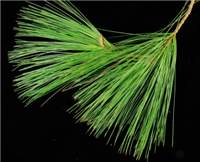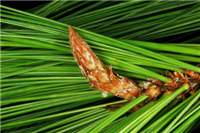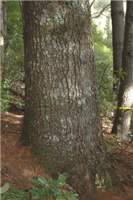Name
Pinus ayacahuite Ehrenb. ex Schltdl., Linnaea 12: 492. (1838).[Mexican white pine]
Description
Habit: Tree 30-45 m high, crown open, conical and tapering, becoming open and irregular in old trees with many rather small, level branches in regularly placed whorl-like clusters.
Bark: On young trees grey, thin and smooth, becoming rough, grey-brown, scaly and divided into densely flaky, rectangular plates on lower trunks of older trees.
Foliage: Needles in 5s, sometimes more on vigorous young trees, closely set at branchlet ends, 7-20 cm long, slender, mid-green or bluish green, sharp pointed, pendulous, usually persisting for 3 years, lines of stomata on inner sides only.
Branchlets: Slender, smooth, greenish brown to grey, with a dense covering of fine pale brown hairs, or occasionally without hairs.
Winter buds: Ovoid-conic, pale brown to grey, to 15 mm long, scales long-pointed, some free at tips, resinous.
Cones: Solitary or clustered, on stalks 1-3 cm long, pendulous, cone narrow-conic to cylindric, often curved, very long, 20-50 cm long, opening to 6-15 cm wide at the base, pale yellowish brown when ripe, very resinous, often white clots of resin on the scales, basal scales very strongly reflexed. Var. ayacahuite – outer end of seed scale thin, recurved but not reflexed; var. veitchii – outer end of seed scale thick, elongated, narrowed, reflexed.
Seeds: Ovoid, 6-15 mm long, greyish brown, often spotted and streaked darker. Seeds of the var. ayacahuite are smaller with a well developed wing 2-4 cm long with an obliquely notched apex. Seed of var. veitchii is larger, to 15 mm, with a shorter wing up to 2.5 cm long.
Notes
Two varieties have been described, of which both have been planted in NZ. Can be distinguished from other 5-needled pines by the combination of downy young shoots, drooping needles, bud scales without dark tips and very long cones (usually exceeding 25 cm). Several rows of basal scales are strongly reflexed.
Natural Distribution
Mexico, Central America.



